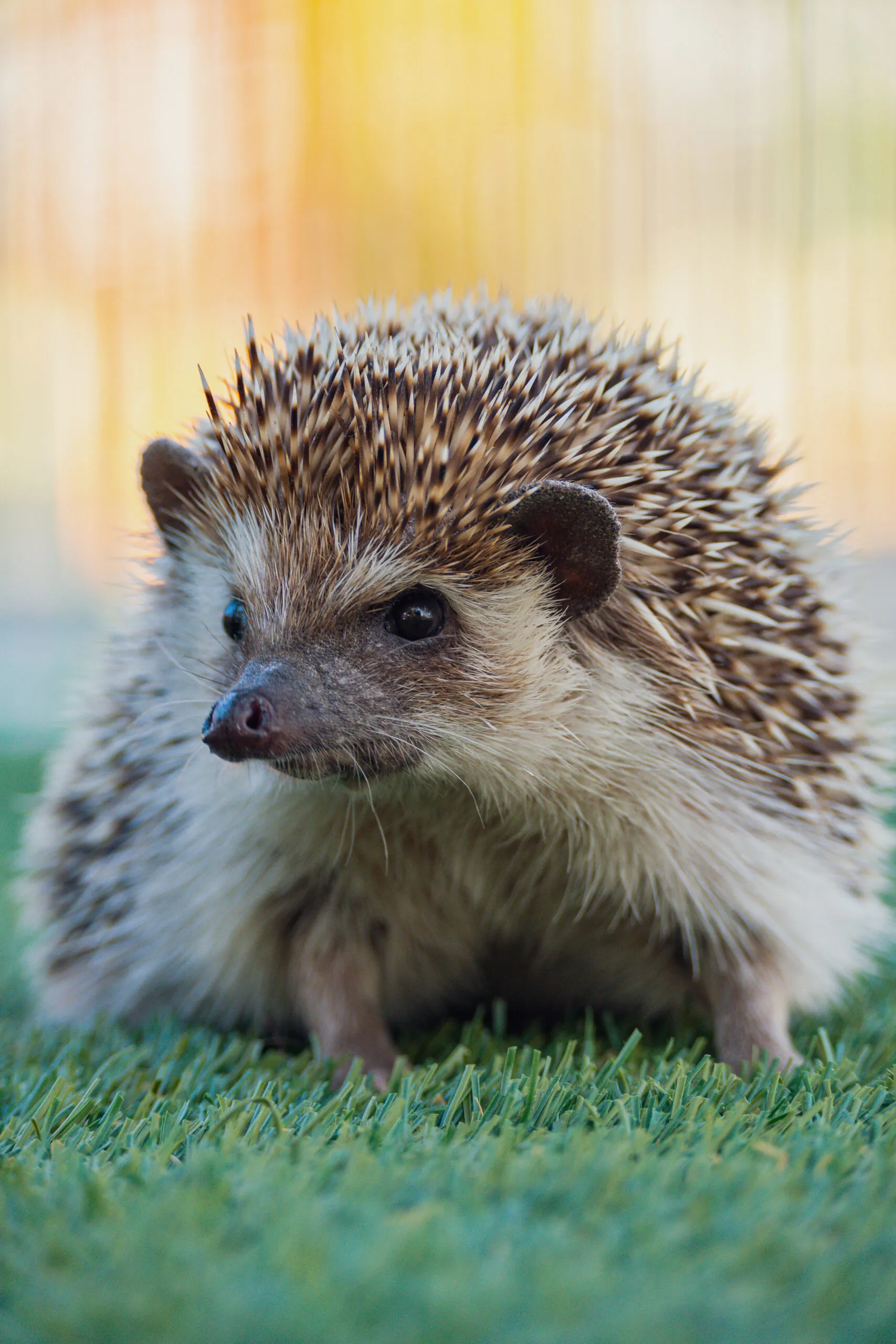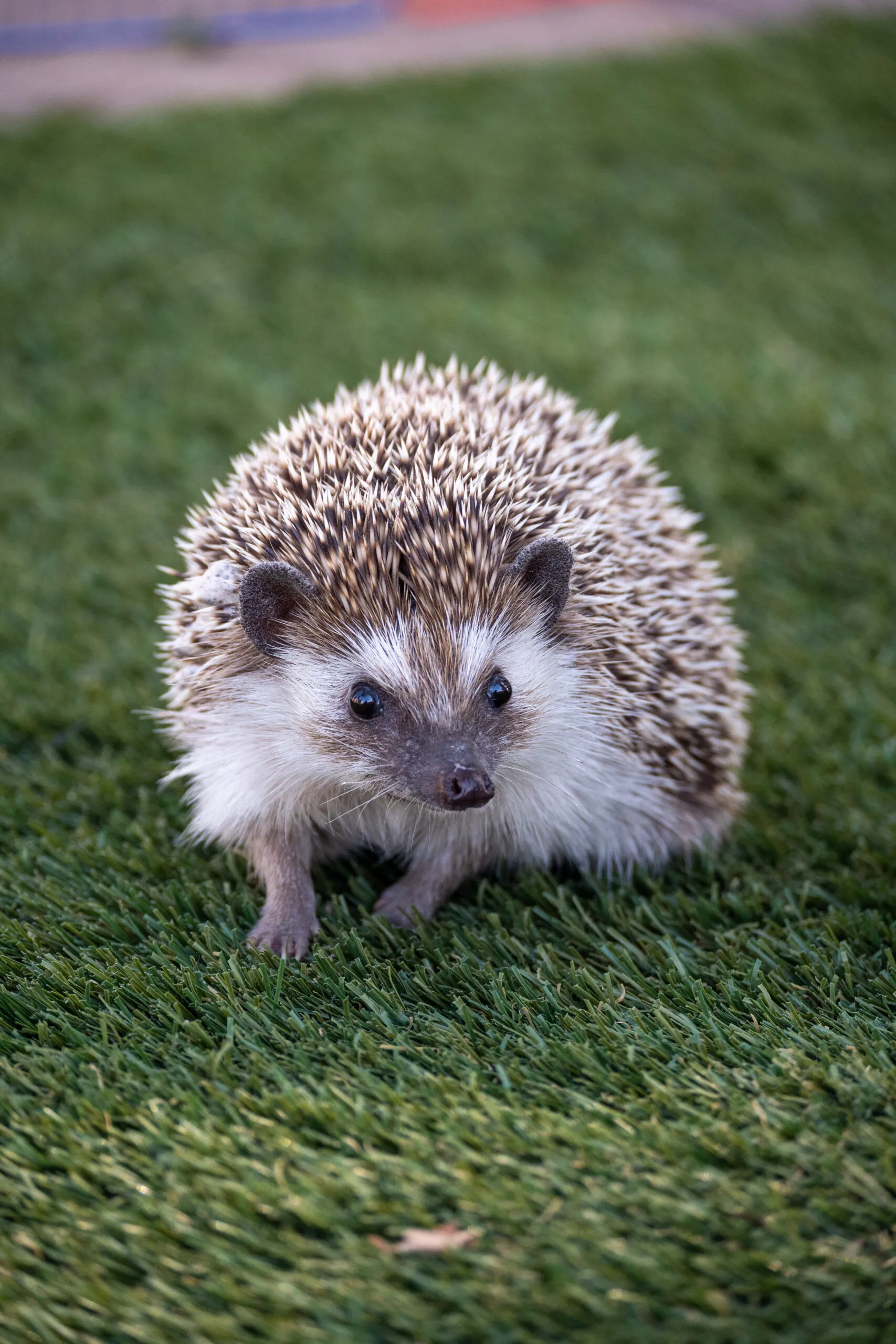Four-toed Hedgehog
Atelerix albiventris
This species is an Ambassador Animal and only viewable in special programs.
Little Porcupines?
Nope! Porcupines are classified as rodents, and hedgehogs are more closely related to shrews and moles. Hedgehogs and porcupines independently developed the same solution to predators: sharp spines. In both animals, the spines are modified hairs composed of keratin, the same protein that makes up your hair and fingernails. Unlike porcupines, hedgehog spines are firmly attached to their skin and won’t fall out in an attack. Just like porcupines however, the spines ensure that predators don’t investigate too closely!
What Is That Smell?
Hedgehogs engage in a behavior called self-anointing, and scientists aren’t exactly sure why. They will chew things that have a strong or foul odor, producing a foamy saliva which is then licked onto the spines. Have you ever seen a dog roll on something smelly? It’s the same idea. Maybe this gives the animal a degree of protection against biting insects, maybe it hides their scent from predators, or maybe it attracts the attention of other hedgehogs. Maybe they just like it.
What’s for Dinner?
Hedgehogs are nocturnal, venturing out at night and sleeping during the day. While their diet generally includes a variety of nocturnal invertebrates like worms, insects, snails, slugs and arachnids, some hedgehogs have been observed eating small frogs, lizards and even snakes! Hedgehogs can smell prey up to 2cm under the ground and help keep soils healthy and aerated with their constant digging. Here at the Phoenix Zoo, our hedgehogs get a variety of worms and insects, insectivore pellet diet, and fresh produce.

Diet: invertebrates, plants, snakes
Zoo Diet: frugivore diet, invertebrates
Habitat: grasslands, deserts, swamps, mountains, forests, urban areas
Length: 5 – 12 in


Plan your visit today!
The Phoenix Zoo is one of the largest non-profit zoos in the U.S., caring for over 3,000 animals, with nearly 400 species represented, including many threatened/endangered species.

Plan your visit today!
The Phoenix Zoo is one of the largest non-profit zoos in the U.S., caring for over 3,000 animals, with nearly 400 species represented, including many threatened/endangered species.







